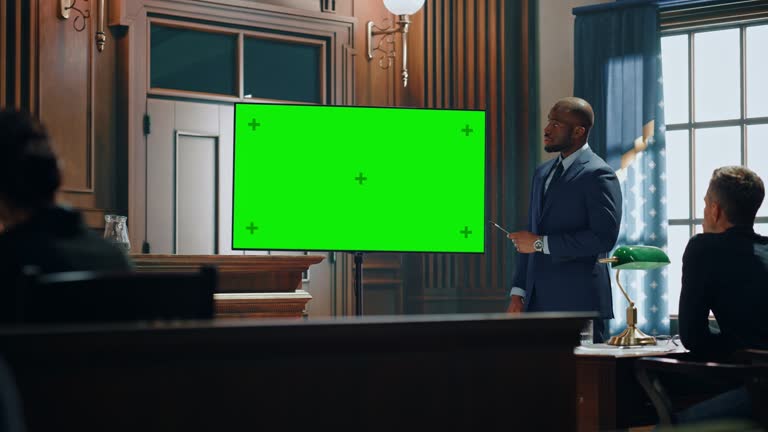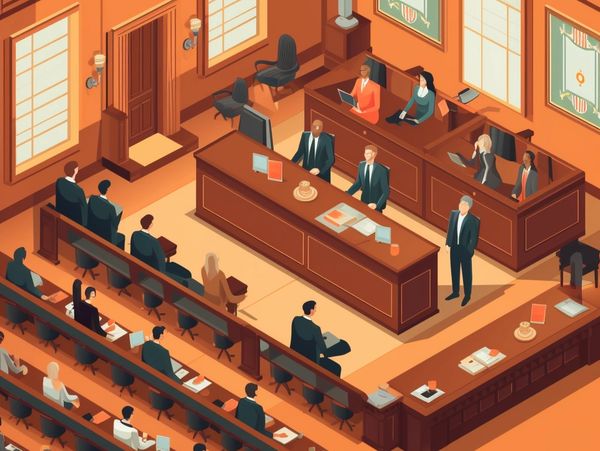Browsing the Complexities of Test Presentations: Tips for Seamless Shipment and Engaging Disagreements
In the world of lawful proceedings, the art of trial presentation stands as a crucial determinant of success. The complexities intrinsic in test discussions call for a delicate balance of technique, finesse, and skill.

Comprehending Test Purposes
To efficiently browse a test, it is crucial to have a clear understanding of the goals that require to be attained. Prior to stepping into the court, lawful groups must specify their goals and preferred end results. These goals work as assisting concepts throughout the test, shaping techniques and influencing decision-making procedures.
Recognizing test purposes entails an extensive analysis of the situation, legal criteria, and the client's best rate of interests. Trial Presentations. It needs a careful exam of the realities, recognizing vital concerns, and preparing for possible obstacles. By establishing certain and quantifiable objectives, attorneys can tailor their presentations and debates to straighten with the wanted outcomes
In addition, a clear grasp of test purposes allows legal teams to prioritize proof, witnesses, and lawful disagreements efficiently. It allows for the development of a coherent story that reverberates with the court and court, enhancing the general case discussion.

Organizing Evidence Efficiently
Having a clear understanding of trial purposes lays the foundation for arranging proof effectively in legal proceedings. By lining up the discussion of proof with the wanted end results of the trial, lawful groups can reinforce their disagreements and improve their persuasiveness.
An additional crucial element in organizing evidence effectively is establishing a logical flow. Offering evidence in a sequential and systematic fashion can help develop an engaging narrative that supports the lawful debates being made. Additionally, making use of aesthetic help such as graphes, timelines, or graphs can further improve the organization of evidence and aid in clarifying intricate connections or series of occasions.
Moreover, making sure that all proof offered is appropriate and admissible to the instance is essential. Irrelevant or inadmissible evidence can take away from the toughness of the debate and potentially harm the trustworthiness of the offering event. A precise testimonial and selection process need to be carried out to consist of only the most legally audio and impactful proof in the test presentation.
Crafting Persuasive Stories
Crafting engaging narratives plays an essential duty in offering influential debates throughout legal process. A well-crafted narrative has the power to astound the audience, stimulate feelings, and inevitably guide the decision for the here and now celebration. When creating a story for a test discussion, it is important to establish a clear storyline that highlights bottom lines and attaches them in a systematic manner. Begin by outlining the facts of the case in a compelling manner, guaranteeing that the sequence of events is easy to follow. Introduce characters successfully, supplying background info that helps the audience understand their inspirations and activities. Furthermore, incorporating vibrant descriptions and interesting language can bring the narrative to life, making it more remarkable for the court and court. By weaving together evidence, testament, and lawful disagreements into a cohesive and influential story, attorneys can efficiently advocate for their customers and boost the possibility of a beneficial outcome in the court room.
Mastering Visual Help
Efficient use aesthetic aids is vital to enhancing the effect and clarity of trial presentations. Aesthetic aids, when used tactically, have the power to streamline intricate information, strengthen key factors, and leave a long lasting perception on the court and court. To understand aesthetic aids in test presentations, it is crucial to ensure that they are clear, succinct, and appropriate to the arguments being made.
When integrating visual help, such as charts, timelines, charts, or pictures, right into helpful site a test presentation, it is important to keep them visually appealing yet professional. The visuals should complement the spoken debates, giving a graph of the info being gone over without frustrating the target market with unneeded details.
Furthermore, experimenting the aesthetic help in advance is imperative to make certain a seamless delivery during the test. Familiarizing oneself with the content, shifts, and timings of each visual help can assist keep the flow of the discussion and stop technological glitches that might emerge.
Providing Impactful Closing Disagreements
A compelling closing argument offers as the culmination of from this source a test discussion, enveloping the core story and convincing the judge and jury in the direction of a beneficial decision. Begin by describing the main arguments that sustain your customer's setting, emphasizing why the evidence offered throughout the test supports your narrative.
Furthermore, including psychological charm can additionally strengthen your closing argument. Eventually, a well-crafted closing argument need to leave a long-term impression, compelling the court and court to rule in your customer's favor.
Verdict
Finally, understanding test discussions entails understanding objectives, organizing evidence, crafting narratives, using visual aids, and providing impactful closing arguments. By executing these methods successfully, legal representatives can offer their instance flawlessly and make engaging debates in the court room. It is critical to browse the intricacies of test discussions with precision and skill to achieve success in legal procedures.
By lining up the presentation of evidence with the desired outcomes of the test, lawful groups can enhance their arguments and enhance their persuasiveness (Trial Presentations). To understand aesthetic help in trial presentations, it is crucial to make certain that they are clear, succinct, and appropriate to the disagreements being made
A compelling closing argument offers as the conclusion of a trial discussion, enveloping the core narrative and persuading the court and jury towards a desirable choice. Begin by describing the main debates useful link that support your client's placement, highlighting why the evidence offered throughout the trial supports your story.In conclusion, understanding test presentations entails comprehending purposes, arranging evidence, crafting stories, utilizing aesthetic aids, and supplying impactful closing disagreements.
Comments on “Grasping the Art of Trial Presentations: Key Methods for Reliable Legal Arguments”